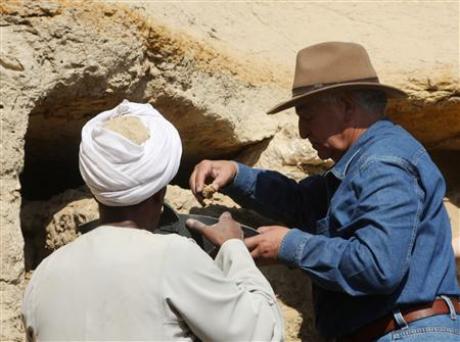Science and Health
Tombs to lift lid on Egypt's ancient middle class
(Agencies)
Updated: 2010-01-06 10:00
 |
Large Medium Small |

Egypt's chief archaeologist Zahi Hawass (R) examines excavation finds at one of the tombs discovered at necropolis Saqqara near Cairo on January 5, 2010. [Agencies] |
CAIRO: Two 2,500-year-old tombs discovered at a necropolis near Cairo promise to reveal more about ancient Egypt's middle class, Egypt's chief archaeologist said on Tuesday.
Dating from the 26th dynasty, which ruled Egypt from about 664 BC to 525 BC, the tombs were found near the entrance to the archaeological site at the Saqqara burial ground, 30 km (20 miles) south of Cairo.
| ||||
One tomb, the largest discovered to date in Saqqara, consists of a complex of rooms and corridors linked to a large hall hewn into the rock.
"We were not expecting to discover any tombs in this area," Hawass said. "These discoveries prove that the importance of Saqqara extends beyond the Old Kingdom of the 3rd to the 6th dynasty and can tell us so much about the 26th dynasty."
Likely looted at the end of the Roman period, the tombs have been opened several times but nonetheless still contain a number of coffins, human remains, mummified animals such as eagles, and clay pottery.
Finding unlooted chambers in such a well-known burial center as Saqqara, which served the nearby city of Memphis, is rare.
"Saqqara has many secrets still," Hawass said.











